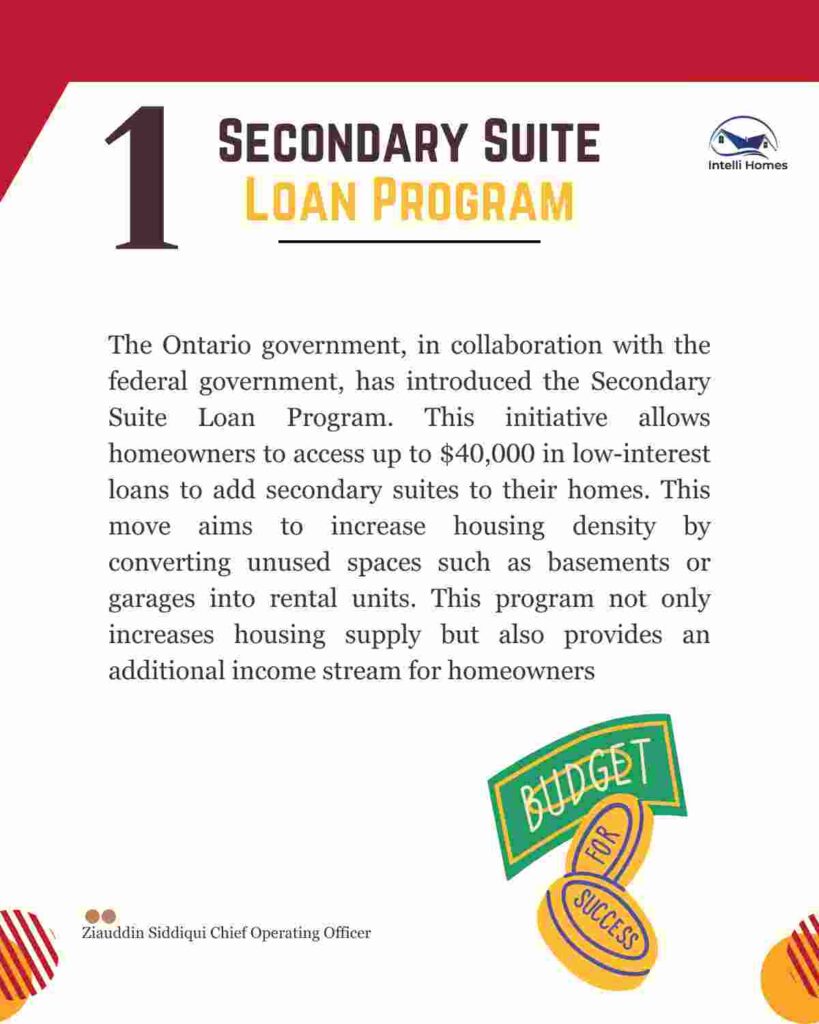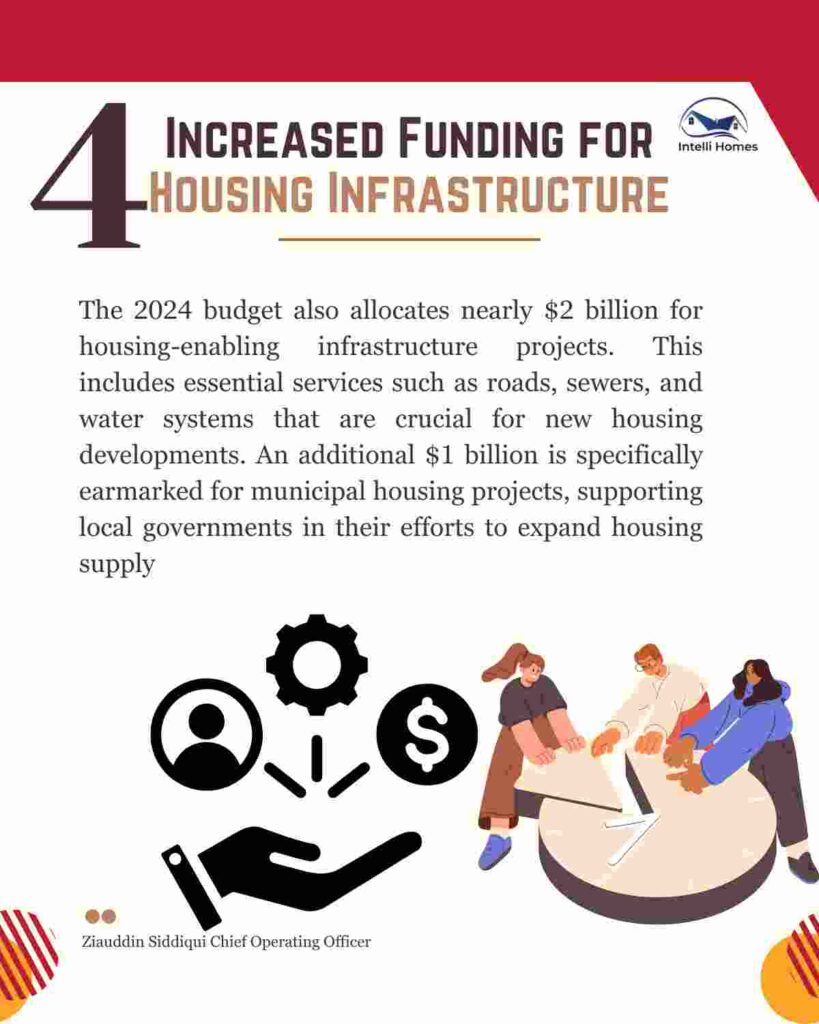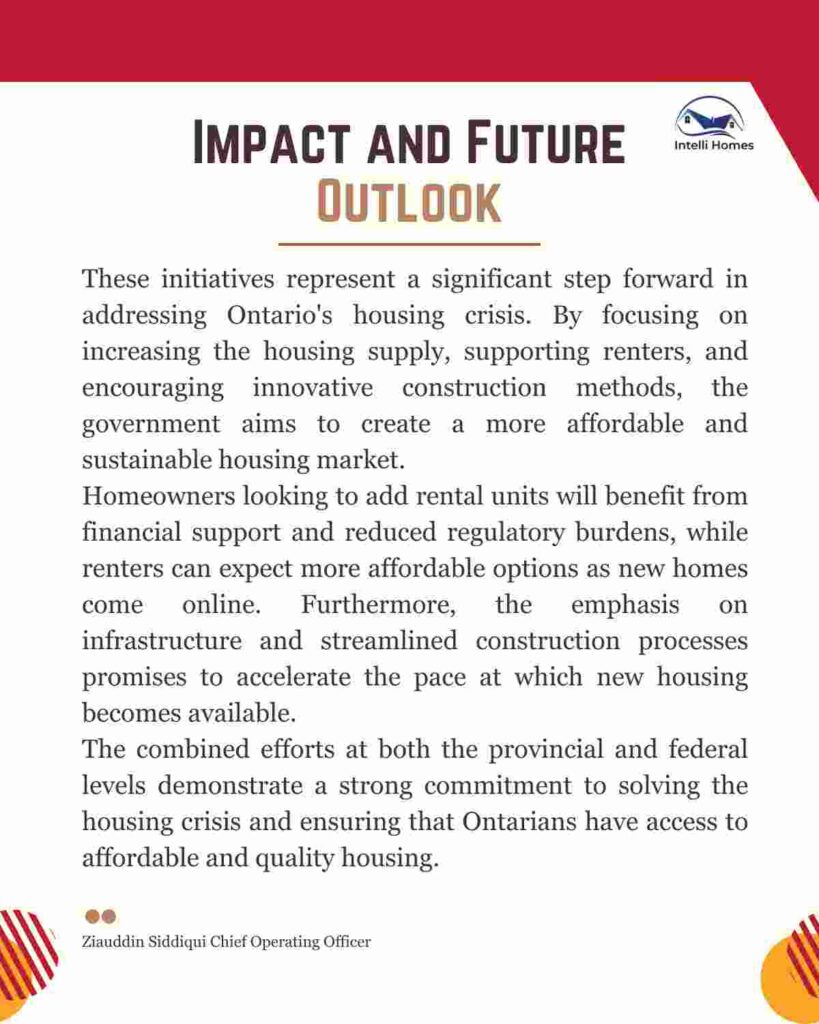Canada has faced housing challenges before, notably after World War II, when a concerted effort by all stakeholders helped overcome the crisis. Today, the country faces a similar issue as the demand for affordable housing continues to grow, particularly in Ontario. Since 2017, the government has been actively addressing the problem, hoping to replicate the post-war success by rallying all stakeholders to resolve the current crisis. With recent measures, Ontario is working to ensure every citizen has access to adequate and affordable housing.
In light of the ongoing housing crisis, the Ontario government, in collaboration with federal authorities, has introduced a series of initiatives aimed at tackling housing affordability and availability. These actions, part of the broader 2024 budget and policy reforms, are focused on increasing the housing supply, supporting renters, and promoting innovative housing solutions.

Key Affordable Housing Initiatives in Ontario
1. Secondary Suite Loan Program
One of the most promising initiatives is the Secondary Suite Loan Program, which provides homeowners with low-interest loans of up to $40,000 to build secondary suites on their property. The program encourages the use of underutilized spaces, such as basements or garages, transforming them into rental units. This not only increases housing density but also gives homeowners an additional income stream. It is a win-win solution, as it expands the rental market while benefiting homeowners financially.
2. Affordable Housing Innovation Fund
The Affordable Housing Innovation Fund received a substantial $123 million boost, which will fund the construction of over 5,000 affordable homes using innovative building techniques, such as pre-fabricated and modular housing. These methods are expected to significantly reduce construction costs and timelines, ensuring that affordable homes can be built and made available more quickly. This fund is a crucial step in meeting the immediate need for housing by accelerating construction while maintaining cost-effectiveness.
3. Cutting Red Tape to Build More Homes
To speed up the construction process, the Ontario government passed the Cutting Red Tape to Build More Homes Act, which eliminates bureaucratic obstacles that often slow down housing developments. By streamlining approval processes, the legislation makes it easier for developers to start new projects, bringing more housing units to the market sooner. This is an essential measure if the government is to meet its ambitious target of building 1.5 million homes by 2031.
4. Increased Funding for Housing Infrastructure
The 2024 budget allocates nearly $2 billion toward housing-enabling infrastructure projects. This funding is intended for essential services such as roads, sewer systems, and water supplies, which are vital for new housing developments. Additionally, another $1 billion has been specifically earmarked for municipal housing projects, giving local governments the resources they need to expand the housing supply in their areas. By investing in the infrastructure that supports housing, these funds will help pave the way for sustainable long-term growth in housing development.
5. Mortgage Rule Reforms
In an effort to further support potential homeowners, the government is revising its mortgage insurance rules. These changes will make it easier for homeowners to refinance their homes and secure higher loan amounts. This reform is part of a broader strategy to make homeownership more accessible, allowing more Canadians to enter the housing market. By enabling better refinancing options, the government is ensuring that homeowners have the flexibility they need to build additional housing units or improve existing properties.








Impact and Future Outlook
The recent housing initiatives announced by the Ontario government signal a strong commitment to tackling the housing crisis. These measures are expected to have a lasting impact by increasing the availability of affordable homes, providing financial support to homeowners, and promoting the use of innovative construction methods.
For homeowners, the Secondary Suite Loan Program offers an accessible way to generate rental income while increasing housing density. Renters, on the other hand, stand to benefit from a growing supply of affordable units as new homes are built more quickly and at lower costs. The combined investment in infrastructure and housing projects also ensures that housing developments will be sustainable in the long term.
These initiatives, alongside legislative reforms like Cutting Red Tape, show that the government is serious about accelerating housing development to meet the needs of a growing population. By 2031, the goal is to have 1.5 million new homes built, providing a much-needed relief to the housing market.
In conclusion, the collaborative efforts between the provincial and federal governments are a crucial step in solving Ontario’s housing crisis. These policy changes and financial commitments are laying the groundwork for a more affordable, accessible, and sustainable housing market for all Ontarians. As all stakeholders work together, there is hope that much like the post-war recovery, today’s housing crisis can also be overcome, ensuring that everyone has access to the housing they need.


